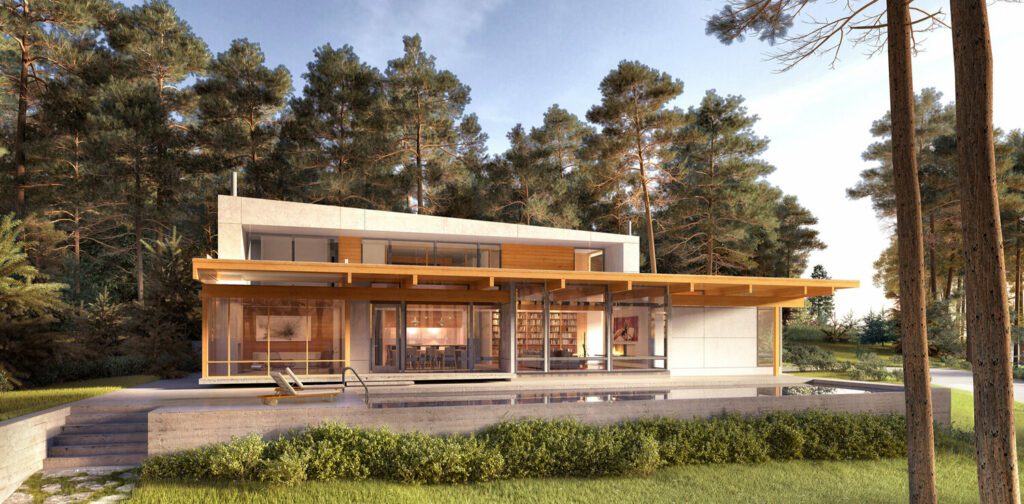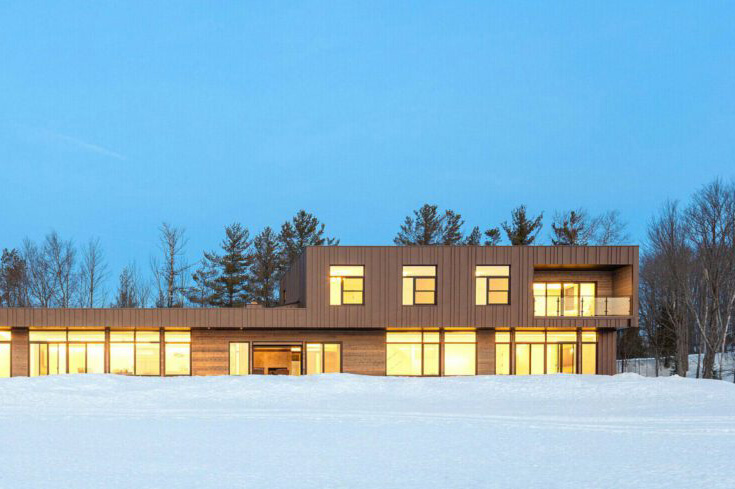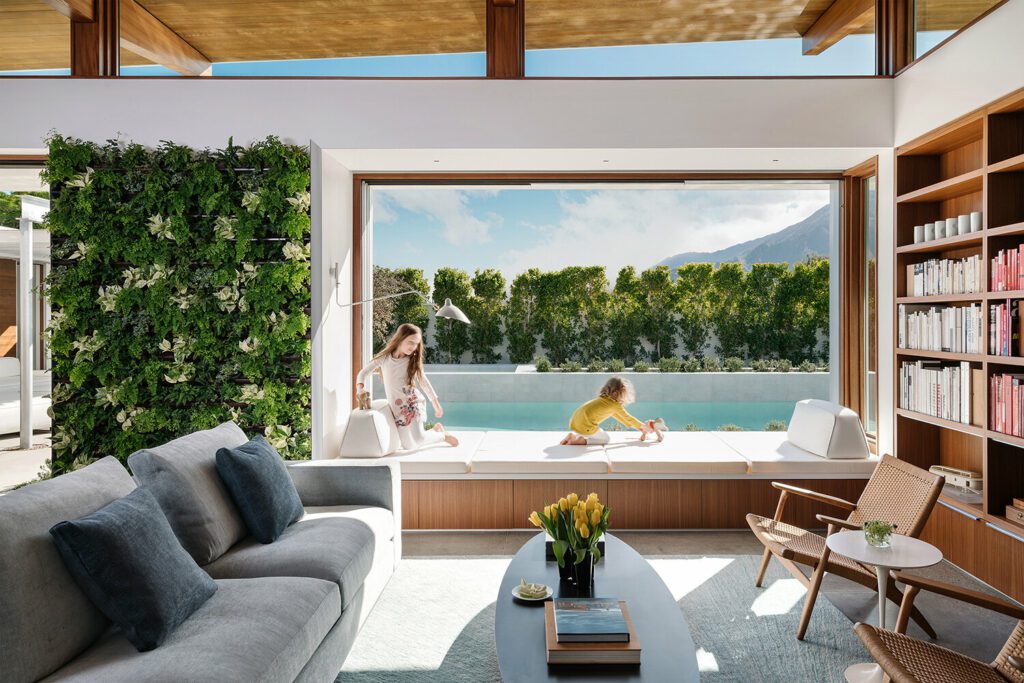Materiality in Turkel Design Homes
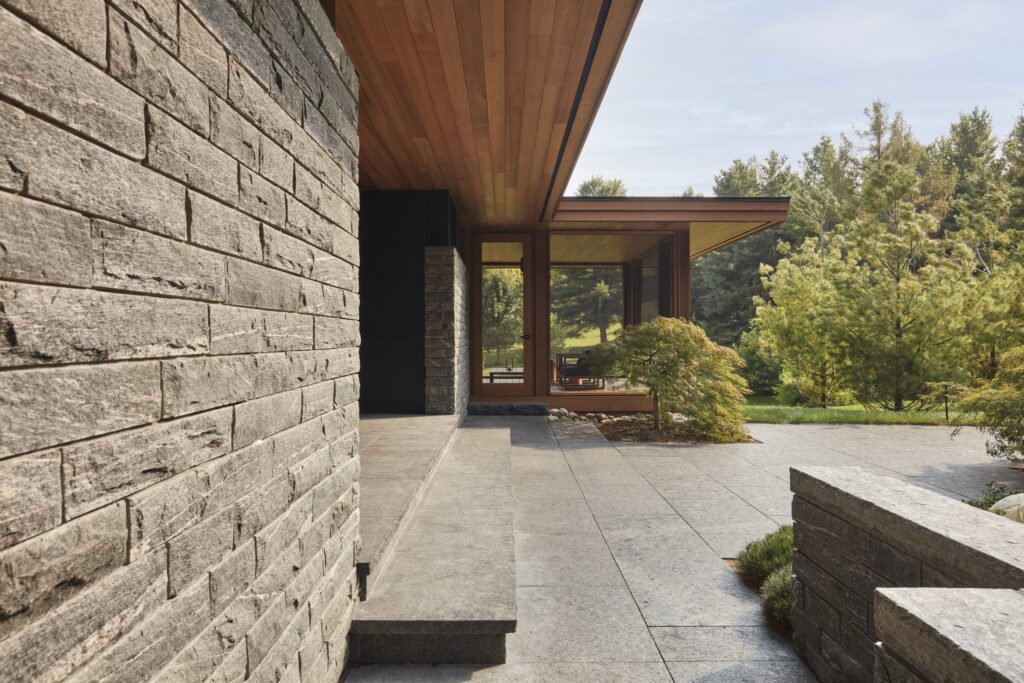
In a previous post, we described how the organic quality of wood makes it uniquely appealing to the eye and an ideal material for residential architecture. But wood is not alone among natural materials that make a structure feel like a home. The use of natural rather than synthetic materials can help ensure that a modern home is timeless. We like to use stone because it shows us how it was formed. (Wood discloses to us how it grew.)
When the owners of our Mulmur Hills Farm house approached us, they envisioned a home composed primarily of three materials: wood, stone, and glass. They had seen how we used natural materials in our designs, and our team was inspired by the opportunity to fulfill the project’s programmatic goals while honoring the request to work with those three materials.
The combination of wood and stone is particularly inspiring because it highlights both complementary and contradictory elements.
Wood and stone have several characteristics in common, beginning with the fact that they both occur naturally. Cut them open, and you can see evidence of the processes that made them what they are today, through the rings in the wood or the veining of the stone. These features contribute to making a modern home that does not feel tied to a specific era.
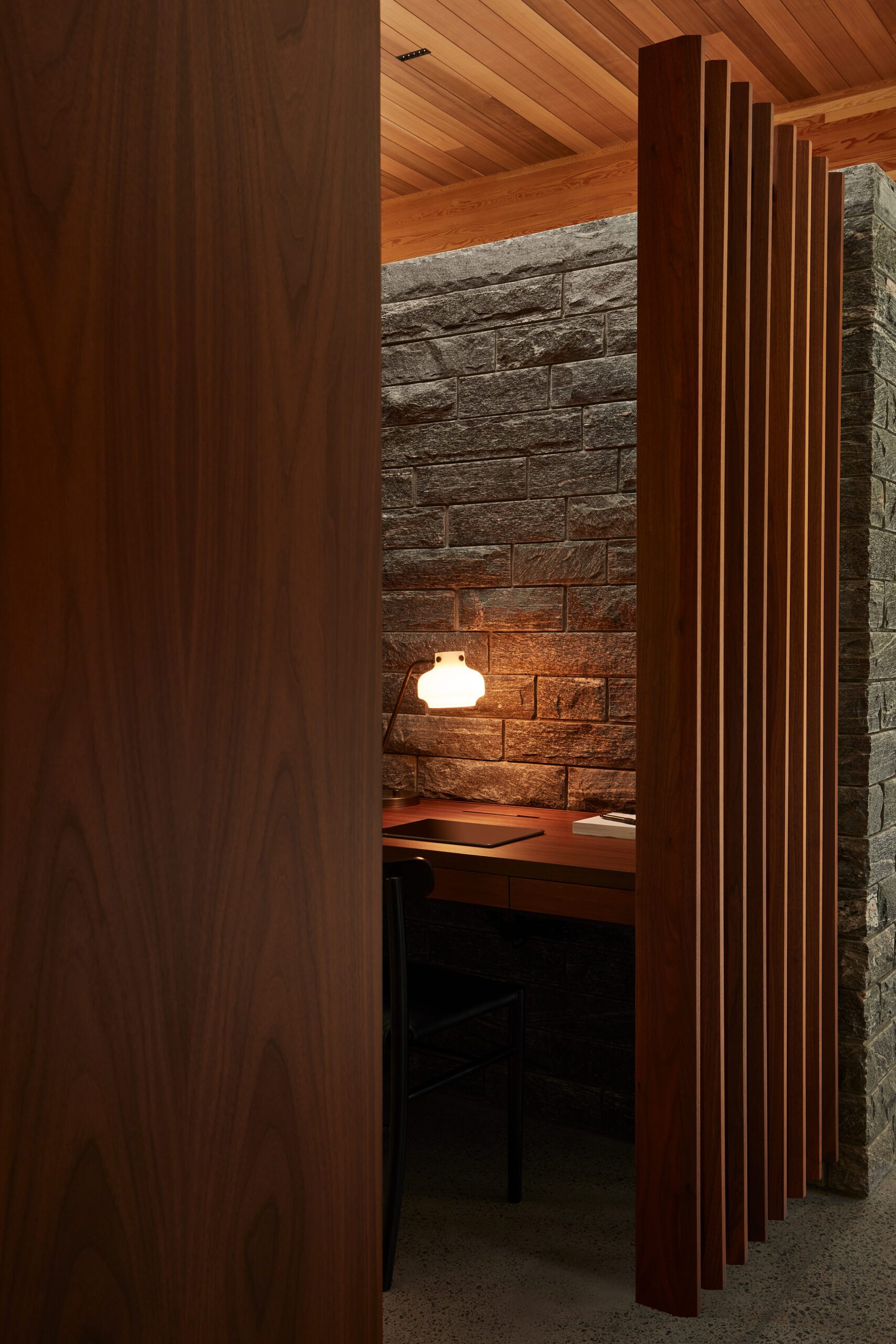
Weights and Textures
The contrast of these materials lies in their various weights. The heaviness of a granite fireplace and chimney, for example, can create a dramatic focal point, contrasting with the comparative lightness of the wooden ceiling, glass walls, and polished concrete floors at Mulmur Hills Farm.
The textural contrast is striking as well. In the office nook above, note the textural difference between the walnut slatted screen and desk and the granite wall. The shape and finish of stone depends largely on how it is dressed, once it is extracted from a quarry. While some may choose to polish stone into a uniform smoothness, here the dressing of the stone has left much of its natural textural variation intact. Although the surface of the walnut is much smoother than the granite, it has been stained and sealed in a way that emphasizes the grain. The smooth wood and craggy stone may look and feel different, but they’re simultaneously bonded by a warmth that comes from the highlighting of these organic qualities.
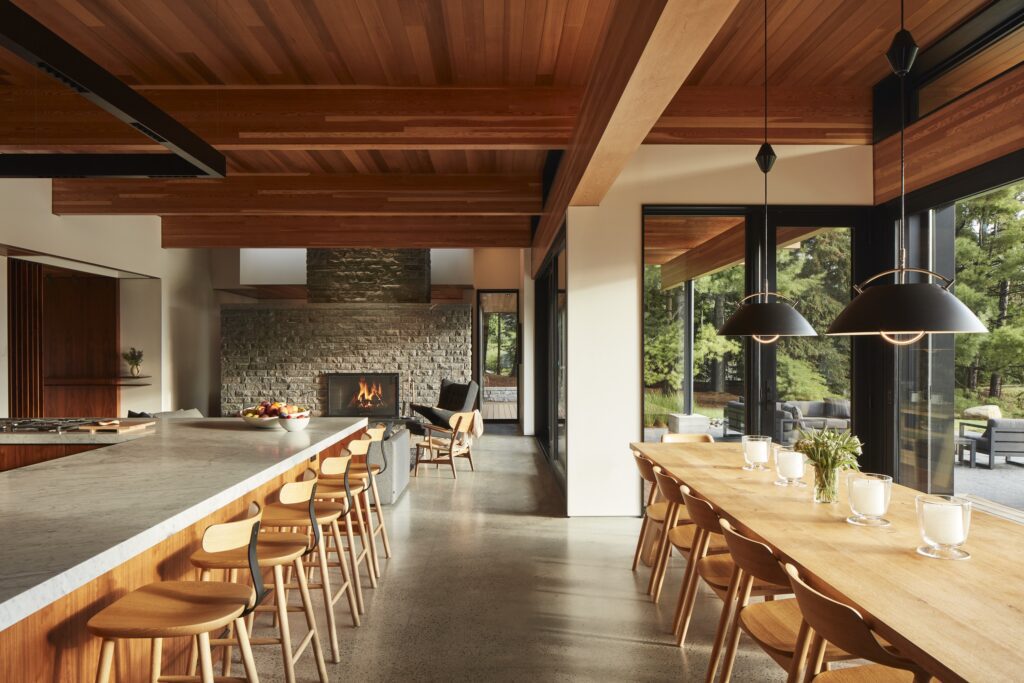
Stacking and Spanning
Different materials work in different ways to support a structure. A stone wall, for example, holds itself up by a process of stacking. Picture a classic New England dry-stone wall: the individual stones come in a variety of shapes, but they are carefully placed so that they interlock, each one holding the surrounding stones in place. In more conventional stone walls, this interlocking is accomplished by beds of mortar.
Wood beams, on the other hand, do their structural work by spanning between vertical supports. They accomplish this by means of long fibers—running in the direction of the span—bound tightly together. Imagine a stack of a dozen sheets of paper: If you try to hold the stack from one edge, it will sag, but if you glue the sheets atop each other, the whole assemblage becomes quite stiff. This is precisely how the limbs of live-oak trees can span dozens of feet out from the trunk.
The result is that these materials please our eye by showing us how they work. In the great room of Mulmur Hills Farm, the exposed grain of the laminated timber beams proudly announces how they’re holding up the ceiling. And the individual pieces of granite declare how they come together to form a fireplace and chimney.
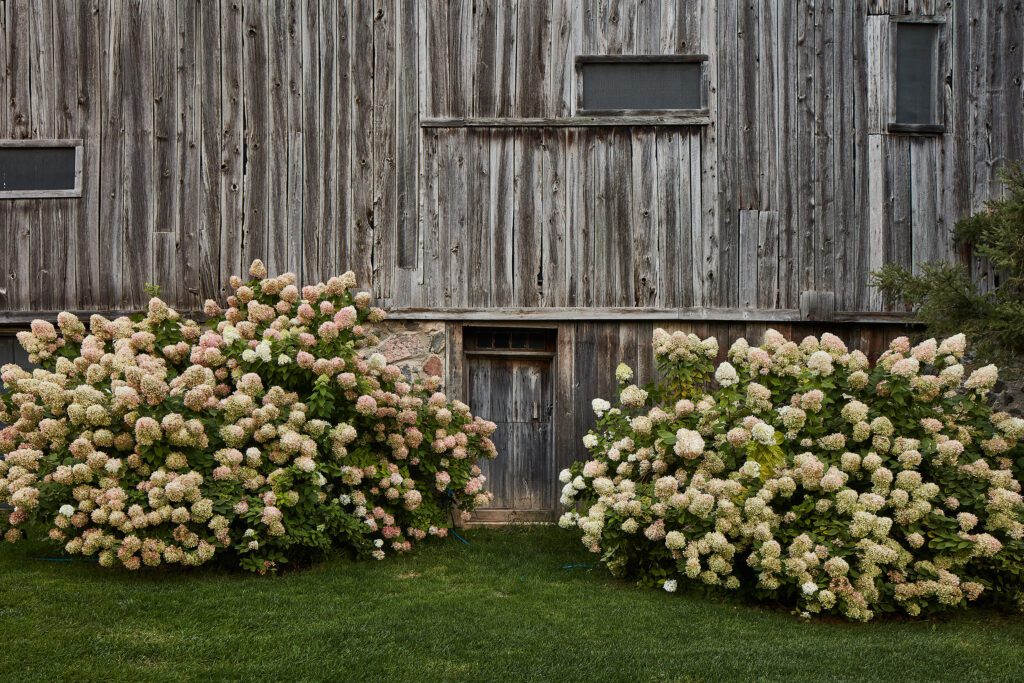
A Home Out of Time (but Not Out of Place)
Additionally, the organic quality of these materials can ensure that a home feels one with its environment. Mulmur Hills Farm is sited on 100 acres of farmland with existing outbuildings that date as far back as the 1890s. Because we selected regionally appropriate wood and stone, the home feels modern yet fits within its pastoral setting. For the owners (semi-retired Toronto entrepreneurs), their new house is both a vacation home for multiple generations of a growing family, and a place designed and built to last for generations to come.
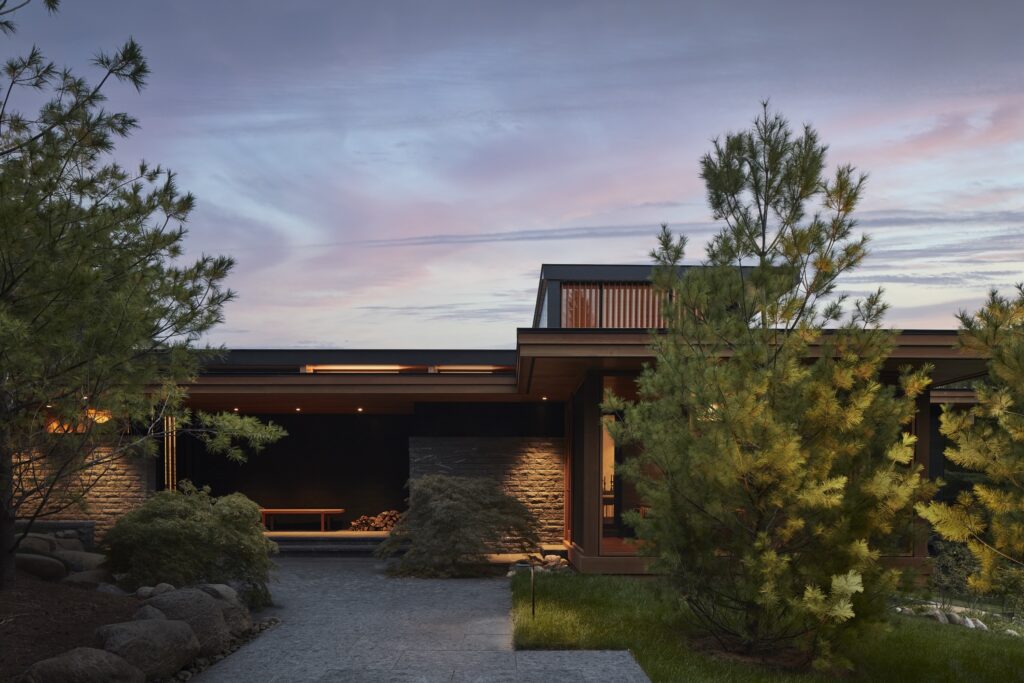
Material Benefits
At Turkel Design, we always use the highest quality natural materials to realize your custom home. We work this way because it results in homes that are durable, with less impact on the environment, and—as we have seen in this marriage of wood and stone—rich with the kind of beauty that only nature can provide.
Does your vision for a custom home include the warmth and simplicity of durable, natural materials? Let us know. We’d love to discuss how you want to live.
Photography by Maxime Brouillet
